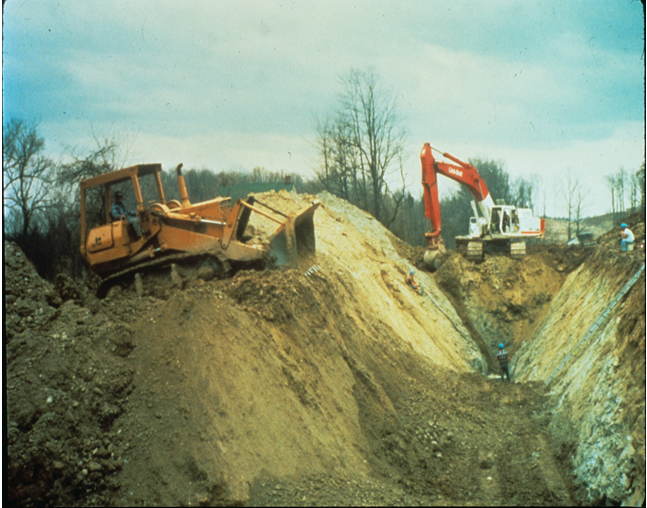
When a safety incident occurs, the cause may be fairly clear and involve one distinct failure of the OHS program. But in some cases, it may appear that everything that could go wrong, did.
In a recent case from Ontario, multiple failures resulted in the death of a worker in a trench collapse. And as terrible as this incident was, more individuals could easily have died or been seriously injured. Here’s a look at the case and everything that went wrong.
A company was installing water and sewer lines at a residential construction site. A backhoe operator dug a trench from each of two residences, joining them into a single trench in a ‘Y’ configuration leading to the municipal water and sewer main lines.
Mistake #1: The depth of the excavation at one of the residences was about 10-11 feet. Its sides weren’t sloped. A shoring box was available at the site. But the dimensions of that trench box weren’t sufficient to shore this excavation.
Under the trench requirements in the OHS laws, the company should’ve ensured that the walls of the trench were either properly sloped or shored/supported to prevent their collapse.
Mistake #2: The excavated material removed from the above trench had been piled about three feet (one metre) from the edge of the trench, which may have been too close given that the trench walls weren’t shored.
The OHS laws typically bar employers from piling excavated material closer than one metre from the excavation’s edge. Why’ Because the dug up soil could fall back into the excavation and bury workers inside. In addition, a very large ‘spoil pile’ located near the excavation can exert lateral pressure on the dig’s walls and cause them to collapse.
Mistake #3: One of the workers entered the unshored and unsloped trench to clear dirt that had fallen onto the pipe, despite his co-workers’ urging to the contrary. At this point, the supervisor was sitting in a truck completing paperwork, and didn’t see or instruct the worker about entering the trench.
Proper supervision doesn’t necessarily mean a supervisor never takes his eyes off of his crew. But when workers are doing especially hazardous work’such as working in confined spaces like trenches’more hands-on supervision is likely to be necessary.
Mistake #4: The side of the excavation collapsed, burying the worker in the trench up to the chest. A worker, the supervisor and two responding police officers jumped into the trench in an attempt to free him. But the commander of the responding fire department ordered everyone out of the excavation. Moments later, a second cave-in completely buried the worker, who died as a result.
When an emergency happens in a confined space, the would-be rescuers are as vulnerable to injury or death as the workers already in the space. That’s why the OHS laws require emergency plans for confined spaces, such as excavations, that cover what to do’and not to do’in the event of a safety incident involving a confined space. In this case, by jumping into the trench to try to save the worker, four other individuals put themselves at risk and were lucky to get out alive and unhurt.
A Ministry of Labour investigation found that the company didn’t have documented training of its employees on that crew relating to the hazard of working in trenches or to the legal requirement for the use of shoring boxes if entering an unsloped trench. The company pleaded guilty and was fined $75,000 [Utility Force Inc., Govt. News Release, Oct. 12, 2016].
To avoid these mistakes when your workers work in excavations or trenches, ensure that you comply with the requirements for excavations and trenches. For example, have a ‘competent person‘ inspect these digs regularly (see, trench/excavation inspection checklist) and keep a log or record of these inspections (see, daily trench/excavation log).


Leave A Comment